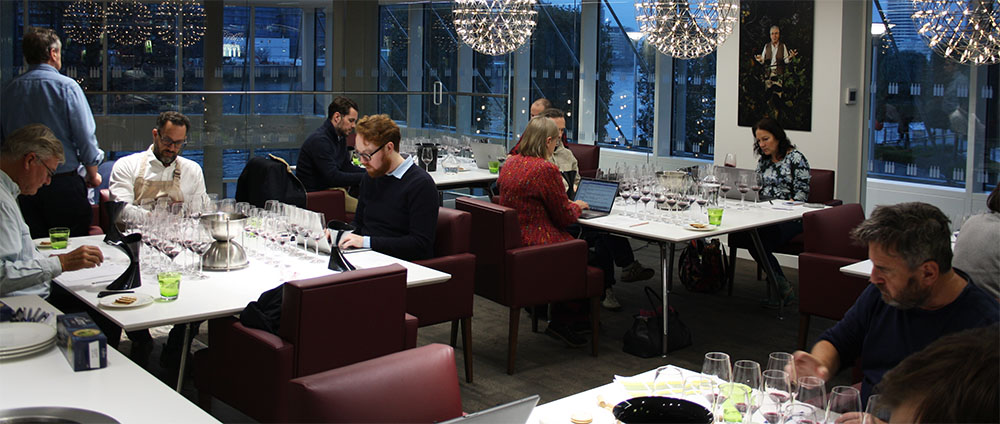
The Southwold Group has tasted the top wines of Bordeaux from the latest physically available vintage together for over 40 years. This used to take place – as the group’s name suggests – in Southwold in Suffolk, but it has now moved to Farr Vintners where we taste in a purpose-built modern tasting room. As a fairly recent member 2018 is my sixth Southwold, and the ninth vintage that I tasted en primeur.
This year’s panel included nine Masters of Wine, the buyers of the leading UK merchants and wine writers Neal Martin, Jancis Robinson and Lisa Perrotti-Brown. Look out for their reviews in due course.
The 2018 en primeur campaign was the last “Pre-COVID” and therefore the last visit many – including myself – made to Bordeaux. At the time I remember significant enthusiasm from producers that it was a great vintage born of imperfect growing conditions. This was not a universal opinion, but many enthused that we had returned close to (and even matched) the quality of 2016. That did not often translate into my glass. Though there were some real highs, the consistency was lacking, and many showed warm alcohols matched with ripe fruit; perhaps a hypothetical 2009, 2015 and 2003 blend. The vintage was clearly very good, but it ranked below 2016, 2010 and 2009. Despite that, I went into the tasting with an open mind knowing that finished wines can show marked changes from barrel samples and having seen some high scores from various critics – particularly at the top.
We tasted the right bank reds first. Cabernet Franc was a great benefit to many in 2018 due to the heat and drought through the summer months. Merlot could be very successful, but it required great care and precision.
The biggest positive to take away from the Saint Emilion flights is the evolving style. Though some outliers remain, we are now largely in a post over-extraction and over-ripeness era. In the past, many châteaux’s efforts to impress often left puckering tannins, heady alcohol and raisined fruit that led to low scores or polarised opinion. This was not the case in 2018; an achievement given the vintage conditions.
The wines are rich in fruit and tannin in equal measure, though the ripeness allows for a plump and rounded feel even for those with broad-shouldered structures. Inconsistency in matching tannin, alcohol and fruit means that choosing carefully is paramount both here and elsewhere in Bordeaux in 2018. Alcohol was a concern for some, but the best wines were succulent, full-bodied and balanced.
Berliquet (now owned by Chanel with Rauzan Ségla and Canon) put in a strong performance. It follows in the the style of slick, highly defined fruit and structure of its well-established siblings. Valandraud, Larcis Ducasse and Troplong Mondot took the podium places in their flight, highlighting the shifting style from three properties that were in the past guilty of pushing their wines to (and often beyond) the limit.
The king of Saint Emilion this year was Ausone – a magnificent example of what was possible in 2018 that in fact tied the lead for wine of the vintage. Opulent and yet highly refined, the sumptuous power in this wine was perfectly measured. It is delicious already but will improve for decades. Ausone stood head and shoulders above the rest, though Canon took second place with Angélus close behind.
The best 2018 Pomerols are fantastic, but the inconsistency here revealed the difficulties in 2018. The best managed the heat to show ripeness without excess - tricky with such high proportions of Merlot in these wines. La Fleur Pétrus and Le Gay showed well in their flight and there was a very strong performance from La Petite Eglise, the second wine of L’Eglise Clinet. This is the value pick on the right bank: very much in the style of the Grand Vin but packaged in a much more approachable form. Give it a year or two and then drink over a decade; you won’t be disappointed.
Lafleur was the overall winner in Pomerol, the Cabernet Franc pivotal to the balance, fragrance and freshness that tamed the vintage. L’Eglise Clinet was just behind and will need the most time of all the Pomerols to come around with an almost Médocain tannic structure. Le Pin rounded out the top three with its contrasting fleshy exuberance shining through.
Heading to Pessac Léognan, we found more variability due to the heat and higher percentage of Merlot in many of these blends. La Mission Haut Brion pipped its first growth stablemate Haut Brion to top spot this year. The former was smoky, rich and opulent while the latter had greater depth and black fruit. It is very possible these scores will be reversed at the Ten Years On tasting, once Haut Brion has had more time to unfurl. De Fieuzal was a shock strong performer here, beating all the other famous names – it provides excellent value. Domaine de Chevalier came just behind and is another great pick.
In Margaux we tend to find that Château Margaux is always at the top and so it proved again, but it was run close by a brilliant and sophisticated Rauzan Ségla. Brane Cantenac was just behind and those looking for value should seek out Ségla and Siran – both are succulent and forward whilst retaining pure Margaux florality. Many will draw comparisons to 2015 in the 2018 vintage, but Margaux was clearly stronger in 2015. Conditions often reduced production drastically here, with Palmer making a tiny volume compared to their average.
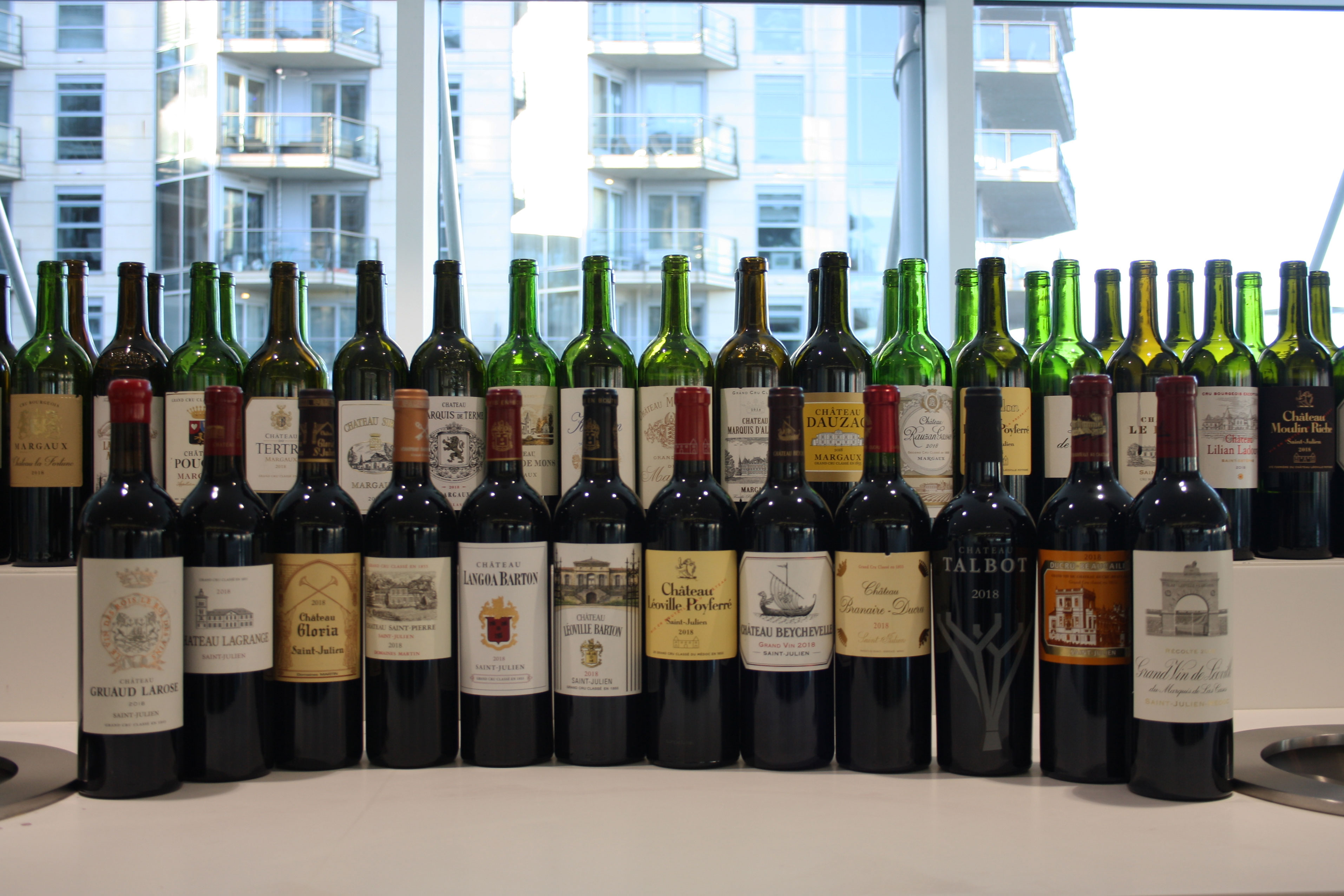
Saint Julien was the most consistent appellation in 2018 – buyers can be confident of quality from any recognised name in this vintage. Cabernet’s dominance brought deep fruit and the vintage conditions softened tannins to bring excellent balance. All three Léovilles were superb and transparently displayed their house styles. Léoville Poyferré took the crown this year, the added richness and deep black fruit impressing the group. Saint Pierre managed an impressive second spot and its boisterous fruit, spicy wood and succulent tannin will be very crowd-pleasing. Those looking for a little less spice and more fruit depth should also look to Langoa Barton, which continues its great run of form, and Gloria will offer great value for money and approachability in this appellation.
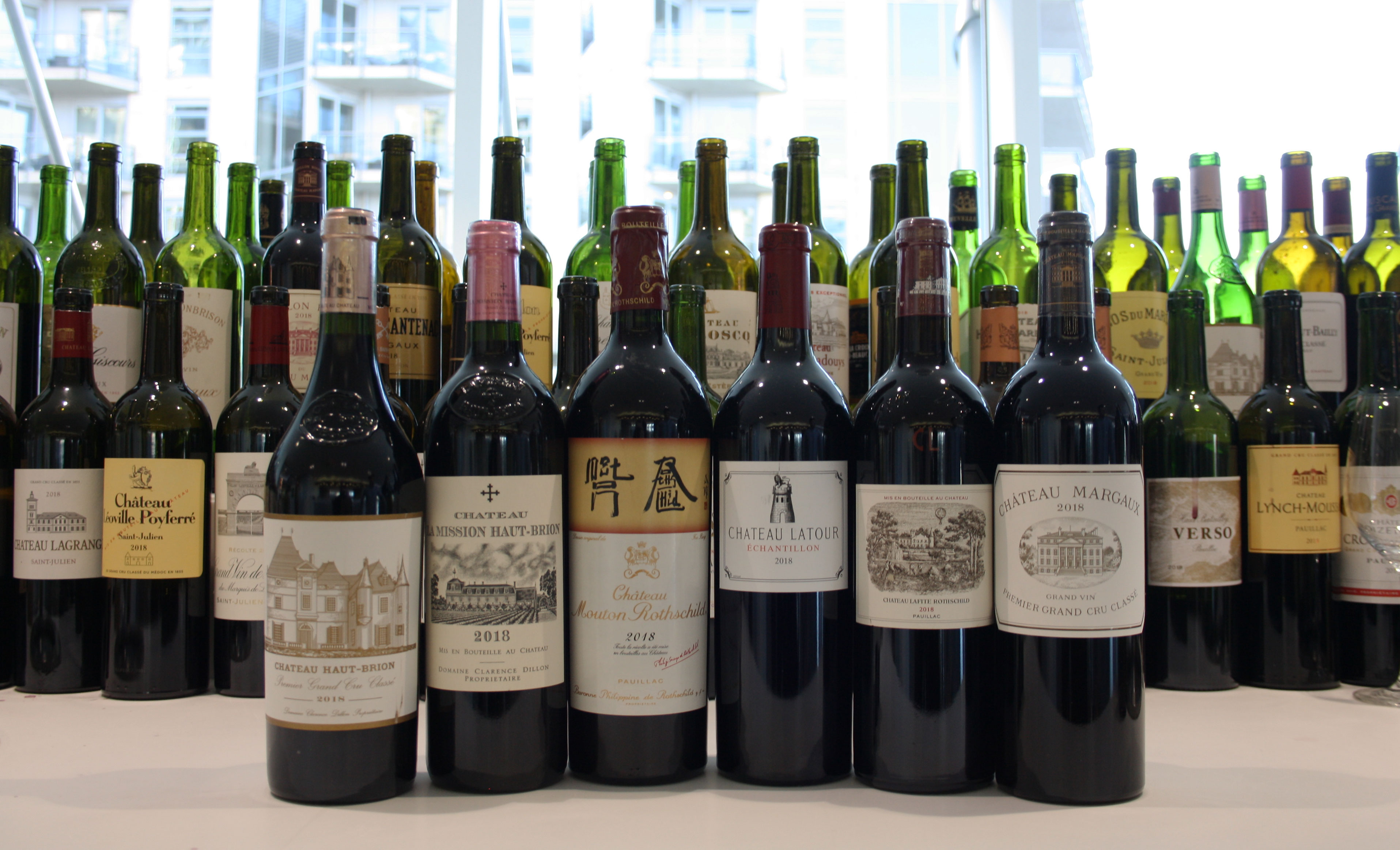
Pauillac was less consistent than Saint Julien, though it had the highest peaks. The best, Cabernet-dominated wines will be the longest lived of the vintage. Broad-shouldered and muscular, most 2018 Pauillacs will need patience in the cellar. Latour took the top spot, a highly refined, deep and powerful wine that showed its remarkable quality despite its closed nature at such a young stage. It has the potential to become one of the very best in time and finished tied first in the entire tasting. Coming in a close second with a stunning performance was Lynch Bages. This muscular, full-bodied wine with enormous structure matched by fruit intensity harnessed the best qualities of the vintage. It offers brilliant value considering it beat multiple first growths blind. It can be bought with absolute confidence and cellared with patience. Haut Batailley – now also under Cazes ownership – beat all but the first growth Pauillacs and Lynch Bages in the appellation. A great value pick that is clearly benefiting from the new regime. Our own Farr Vintners Pauillac fared well against stern competition and offers great value – it will hit its stride in the next 18 months.
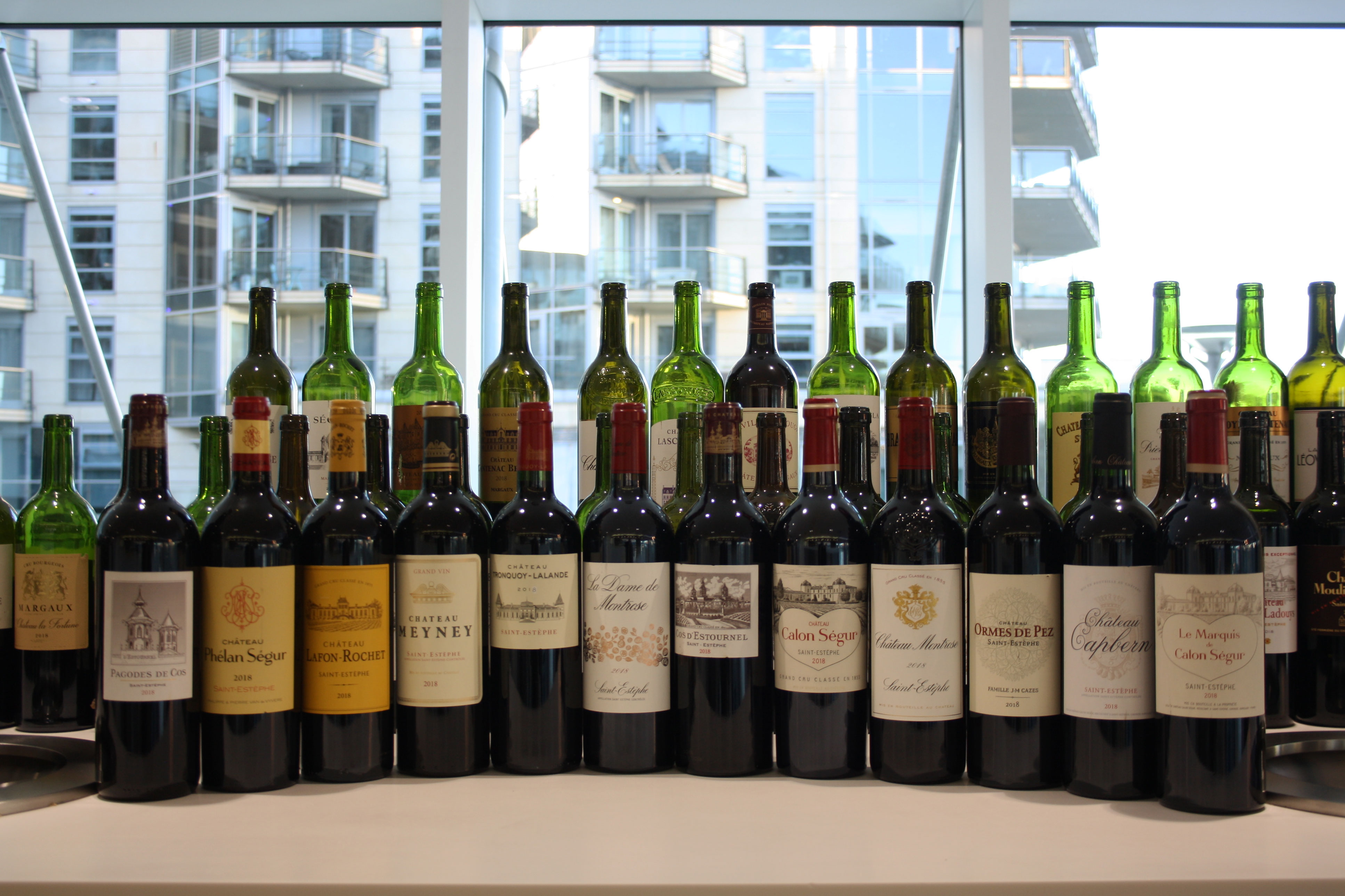
Saint Estèphe produced two gems in 2018. Calon Ségur is a beguiling wine with a supreme fragrance and a supple, seductive, texture matched by a fine and precise structure. Montrose by contrast is dense and chewy, built for the ages. It sits with the likes of Latour, Lynch Bages and Léoville Las Cases as a wine for those with patience – the potential is very high indeed. Ormes de Pez was the value pick this year, ousting several big names to third spot. It has the crunchy savour typical of Saint Estèphe with added fleshiness to bring approachability within the next five years. Meyney was back on form in 2018 after a blip in 2017 – those who have followed this property will enjoy this iteration greatly.
Hot and dry vintages are not often known for their whites, and so it proved in 2018. The dry whites were solar and forward, lacking some tension and acidity, while the sweets lacked the real depth of botrytis and showed more dried fruit quality, again searching for more acid. Domaine de Chevalier took first place with admirable freshness, followed by Petit Cheval Blanc and Champs Libres. These three wines can be enjoyed over the mid-term. The increasing use of DIAM closures in white Bordeaux has been a positive change however – the consistency of samples is much improved. Yquem was a clear winner in the Sauternes flight, the pedigree and attention to detail in vineyard and winery shining through.
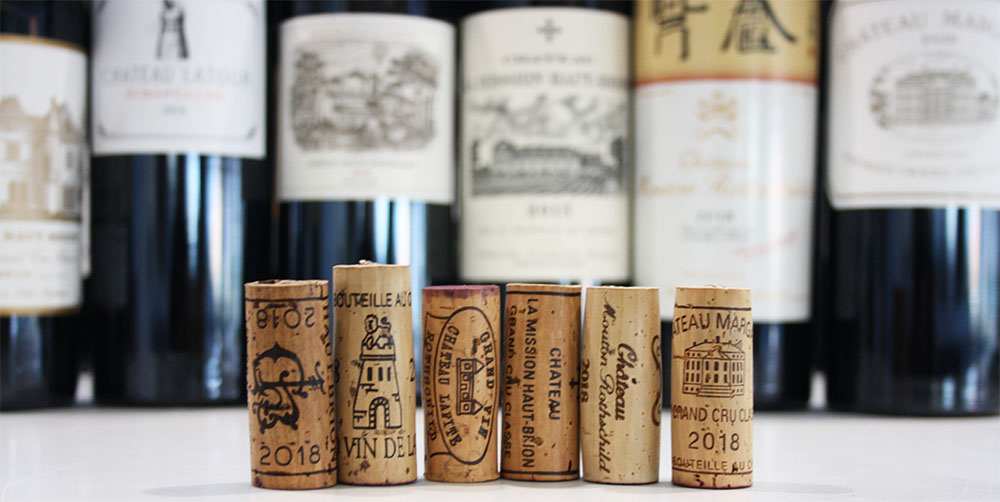
2018 is a vintage with great wines, rather than a great vintage. The ceiling is very high, yet difficult to achieve. The floor is considerably lower than vintages like 2016, 2009 and 2019.
Buyers can find superb wines throughout Bordeaux and at every price point, but must be selective. The vintage is a worthy addition to any Bordeaux cellar. Following merchant and critic recommendations, looking at notes that explain wines’ style and checking the scores will offer great guidance. The wines are bold in structure, powerful and ripe in fruit and show higher alcohols than average.
Ranking the vintages in the last ten Southwold tastings, 2016, 2010 and 2009 remain at the top. Though 2019 has yet to be tasted at Southwold, we strongly expect it to join these great vintages. 2018 sits just behind, alongside 2015. There are similarities between these two vintages, with elements of 2009 and 2003 thrown in. 2018 shows more evident structure than all three of these vintages, which should allow the wines to age gracefully in bottle.